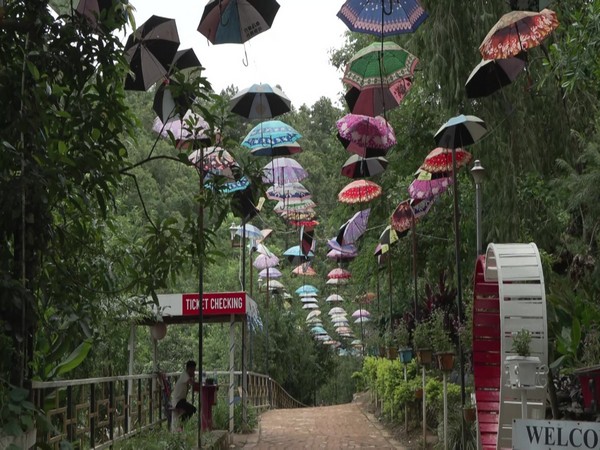New Delhi: North East India has now become a mainstream tourist destination, offering a glimpse into the region’s ecological and cultural biodiversity, heritage and adventure spirit, thanks to the sustained and multi-pronged efforts by the Government of India over the past decade.
The results of the endeavour have reflected through a surge in tourist visits to all eight states, namely Arunachal Pradesh, Assam, Manipur, Meghalaya, Mizoram, Nagaland, Sikkim, and Tripura.
In 2023, about 12.5 million domestic tourists explored the various parts of the northeastern states—a significant increase from 7 million in 2014. The number of foreigners in 2023 was 221,050, which was more than double that of the previous year.
In 2025, the number of visitors is expected to be 20-25 percent higher year-on-year. “As development reaches every corner of the North East, the tourism sector has experienced a surge in growth. Tourist numbers have doubled, leading to a rise in homestays, employment for young guides, and a thriving travel ecosystem,” said Indian Prime Minister Narendra Modi during the Rising North East Summit.
The Government of India launched the Swadesh Darshan Scheme to develop tourism infrastructure, which has ensured significant benefits to the tourism sector in the northeastern areas. It helped upgrade tourism facilities, boosted visitor numbers, improved livelihoods, and even as ensured sustainable development across the region. Several projects were implemented to promote eco-tourism and adventure tourism, thus helping to exploit activities such as trekking, river rafting, and wildlife exploration.
For those who are seeking spiritual and religious experience, the PRASHAD scheme offers smooth and planned visits to famous religious places and heritage sites across the region. Assam’s Kamakhya Temple, Arunachal Pradesh’s Parshuram Kund, Nagaland’s Noksen Church, and Meghalaya’s Nongsawlia Presbyterian Church and Nartiang Shakti Peeth are among the PRASHAD projects.
This scheme integrated these famous places in the northeastern states into national tourism circuits.
The government of India’s endeavour to introduce tourists to the hidden gems in the northeastern states was not an easy task, since the region is hilly, remote and difficult to access by road and rail connectivity. It took steps to build reliable and all-weather connectivity. The UDAN scheme, which aimed to boost regional connectivity, benefited the North East region to a great extent.
Now there are 90 air routes connecting 10 airports and two heliports in the northeastern states. Small towns where there was no air connectivity ten years ago have now got modern airports.
Donyi Polo Airport in Arunachal Pradesh has made visits to famous spots such as Tawang, Bomdila, and Ziro Valley faster and easier. Imphal Airport in Manipur, Pakyong Airport in Sikkim, Tezu Airport in Arunachal Pradesh, and Shillong Airport in Meghalaya are such airports that have opened up several opportunities for local tourism.
At the same time, the government has taken up the work to improve existing road and rail infrastructure, as well as build new ones in remote areas with difficult terrain. About 10,000 km of new roads worth INR 1.07 trillion were built over the past decade, while 5,055 km of new roads costing INR 1.18 trillion are under construction. It contributed significantly to the increased flow of tourists.
Now, tourists can complete circuits like the Tawang-Bomdila-Bhalukpong circuit seamlessly. Moreover, railway lines are built to deeper and hilly areas.
The improved connectivity and effective promotion have also helped bring the unexplored to the world as well as conserve local traditions, noted a research paper titled ‘From Margins to Mainstream: Tourism and the Transformation of Northeast India.’
It said “Sikkim, for instance, has emerged as a popular destination for its scenic beauty, Buddhist monasteries, and adventure tourism. Arunachal Pradesh attracts ecotourists with its tribal cultures and pristine landscapes, while Meghalaya promotes tourism through its waterfalls and living root bridges.”
Meghalaya has become the most popular destination for local tourists.
Even though states like Assam and Arunachal Pradesh have made longer strides, other states such as Manipur, Mizoram, Nagaland and Tripura too are expanding their tourism infrastructure. “Festivals such as Nagaland’s Hornbill Festival, Mizoram’s Anthurium Festival, and Arunachal Pradesh’s Solung Festival have gained national and international recognition, helping preserve indigenous customs,” reads the research.
Regular events are organised in different parts of the world to attract foreigners to North East India. North East India Festival (NEIF) were organised in Singapore and Vietnam, where artists from the northeastern states performed, and invited guests to their area.
The government of India’s commitment and sustained efforts to improve transport connectivity and promote local culture have transformed North East India into a vibrant and accessible tourism destination.
At the ongoing 60th Session of the UNHRC, India Water Foundation, in an official side event and poster exhibition, highlighted the multi-pronged and comprehensive approach of the Government of India to address the unique needs of the region.
The integration of the Sustainable Development Goals into the development programs and targeted development initiatives have led to a socio-economic transformation of the region with improved infrastructure, booming tourism and an uptick in economic growth, while preserving the pristine environment of the region.
Such community led development with support of the Government is a model worth emulating for South Asia in particular and the world in general.
